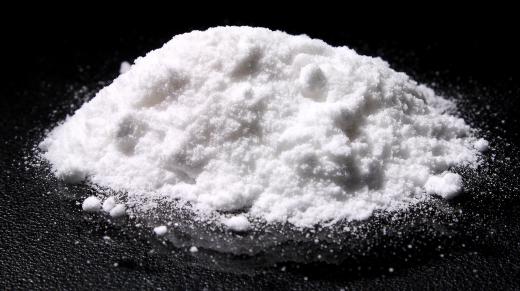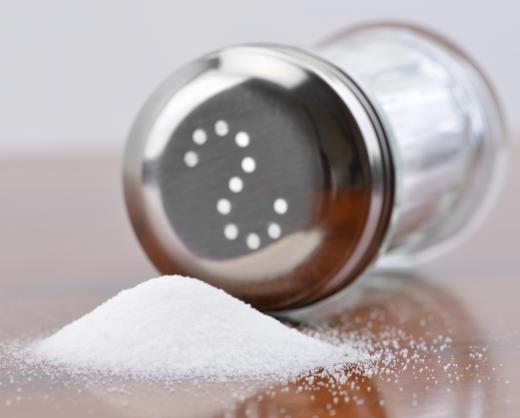What Is Magnesium Silicate?
Magnesium silicate is a chemical compound consisting of magnesium, silicon, and oxygen. It exists in several forms, both natural and manufactured. One of the most common forms of this compound is the mineral talc, which can be found in deposits around the world and is used in many industrial and everyday applications. Synthetic forms are also widely used, especially as filters and additives in the food industry.
Talc is formed in metamorphic geological processes when certain minerals interact with water and carbon dioxide. The type of magnesium silicate that constitutes talc is therefore said to be hydrated — that is, it contains water in its chemical composition. Talc appears as a white crystal or powder and is the softest mineral known.

A common application of magnesium silicate in its talc form is as talcum powder. This substance is used to make baby powder as well as the chalk powder used by athletes, such as gymnasts, to dry their hands for better grip. Talc can also be found in some types of chalk, ceramics, cosmetics, paint, and food products. In table salt, for example, talc is sometimes added to prevent caking. Most regulatory bodies consider talc to be a safe substance in small concentrations, although inhalation or consumption of larger concentrations can cause lung inflammation and other health problems.

Synthetic magnesium silicate, like talc, exists as a white powder, but has different chemical origins. It is produced from the reaction of sodium silicate and a magnesium compound, such as magnesium sulfate. When produced in this way, the particles of the compound are porous, meaning that they consist of spaces through which liquid or gas can pass. This makes them useful as a filter medium.

In the food industry, synthetic magnesium silicate can be added to other filter media to absorb impurities from used oil. It can also be added to powdered foods to keep them from forming clumps, as with talc’s use in table salt. Further applications of this substance are similar to those of talc and include ceramics and pharmaceuticals.
Other forms of magnesium silicate also exist, but are less commonly encountered. For example, the mineral enstatite is a naturally occurring form of this compound. Magnesium hexafluorosilicate hydrate, a compound that contains fluorine in addition to magnesium, silicon, and oxygen, is produced for chemical research. Specialty forms of magnesium silicate are most often found in research laboratories and niche applications.
AS FEATURED ON:
AS FEATURED ON:













Discussion Comments
After reading this article, I will have to check food labels much more closely. The thought of eating magnesium silicate doesn't sound very appetizing!
Post your comments